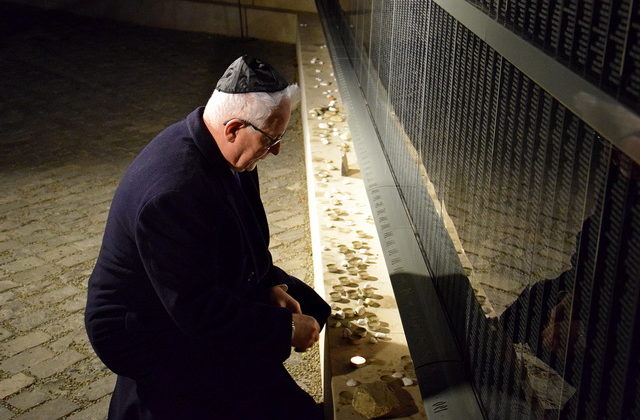As the present regulations in Hungary allow gathering of maximum ten people, the traditional commemoration of the International Holocaust Remembrance Day at the Holocaust Memorial Center in Budapest had to combine online and offline content. The event was streamed on the Facebook page and YouTube channel of the institution, with the online content available also on the special landing page of the Center’s website.
At a prominent place on the landing page a virtual candle of remembrance had been placed; in the days before the event commemorators could send in the names of victims that were subsequently, in shifts of ten seconds, displayed under the candle. The landing page will stay displayed for two weeks. The actual commemoration in the synagogue of the Memorial Center started with lighting the candles of remembrance by members of the Board of the Center and representatives of the local Jewish community. The welcoming address by the chairman of the Board was followed by video messages by minister Gergely Gulyás, Head of Prime Minister’s Office and H.E. Yacov Hades-Handelsman, ambassador of State Israel to Hungary. The message of the Secretary-general of the OUN was also streamed.
The Kállai String Quartet played Mozart, Bloch and Mendelssohn in the musical part of the program.
The virtual opening of the temporary exhibition “Tzores and Mazel Tov at Páva Street – a story of a synagogue and its community” was one of the key parts of the commemoration. The exhibition deals with the history of the local Jewish community, describing also the destiny of its members during the Holocaust. The exhibition was symbolically opened by dr. Tamás Kovács, director of the Holocaust Memorial Center, who talked also about the events linked to the Pava Street synagogue during the Shoah. Rabbi Péter Radvánszki spoke about the history of the community in the church district of Páva Street, the role of the community in the creation of the exhibition and presents some sacred objects that were used in the consecration of the synagogue in 1957. The graphic designer and producer of the exhibition, Balázs Csizik, reflected on the challenges of displaying the exhibition and the considerations that guided him during his creative work. The fourth person taking floor was Hajnalka Biró, museologist of the Holocaust Memorial Center, shared background information about the artefacts on display at the exhibition.
At the end of the commemoration, in line with the decade-and-half tradition, Kaddish was prayed in front of the Wall of Victims.
